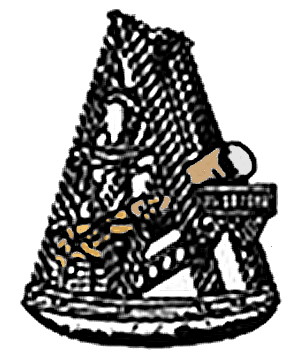A Most Polished View
On November 15, 1738, musician, composer, optics pioneer, and astronomer Frederick William Herschel was born. An oboe (cello, violin, harpsichord, organ…) player so passionate about astronomy when he discovered the discipline that he hooked his sister and brother into a suite of activities that ranged from making observations, recording them, cataloguing them, designing telescope mirrors, pouring, grinding, and polishing them.
One of many discoveries he made over the years was the new planet, Uranus. He proposed to name it after the king, George III, who promptly gave William a knighthood and a pension-for-life for both William and his sister Caroline, a fine astronomer in her own right. The Royal Society gave him the Copley Medal.
Herschel never stopped innovating or improving his telescopes. He built the housing and mounts for each mirror. He made concave mirrors and a turntable mount that provided the manoeuvrability he wanted and allowed him to see farther and more clearly than his colleagues.
Herschel checked out the new Messier star catalogue that referred to some celestial objects as nebulae, “clouds” in Latin. He realized each nebula had been mislabelled because the telescopes used had presented an unfocused cloud to the observers. Herschel’s superior equipment could actually differentiate these “clouds” as clusters of individual stars! While he was checking out catalogue items, he also found two new moons of Saturn.
Investigating solar phenomena, Herschel surprised himself by crossing into the yet-to-be-named field of astrophysics when he found that a thermometer measured higher temperature just beyond the red end of the spectrum than within it. He had discovered infrared radiation, light invisible to the human eye.
Herschel made over 400 telescopes over his lifetime as an astronomer and discovered and catalogued over 2000 stars, new, binary, and clusters. He had propelled astronomy into “deep sky” research.

Herschel’s name is memorialized in celestial objects and craters, schools, buildings, archives, and societies. The Royal Astronomical Society awards the Herschel Medal for outstanding observation in astrophysics. The William Herschel Telescope, one of the Isaac Newton Group of telescopes, is a cooperative venture between the UK, Netherlands, and Spain.
Here is a simulation of a Mega Galaxy merger based on data and images from the Herschel Space Observatory – operated as the European Space Agency’s infrared space telescope, the largest one of its kind ever built:
B Bondar / Real World Content Advantage